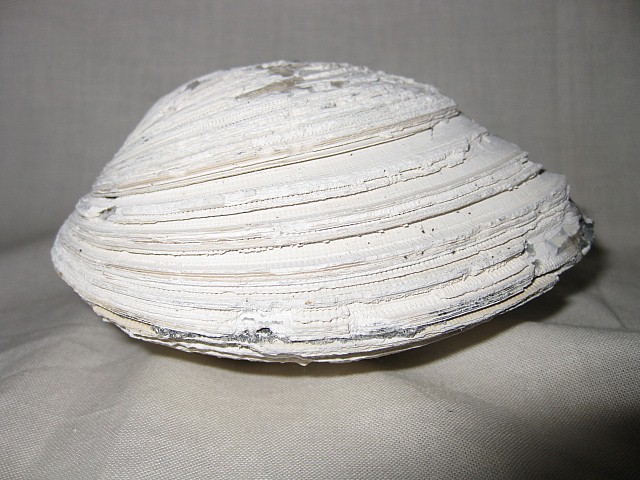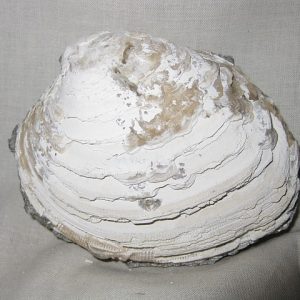Description
- Mercenaria permagna
- Early Pleistocene
- Ruck’s Pit
- Okeechobee County, Florida
- This specimen measures approx. 4 1/4″ wide. I’ve used a microscope camera to take a picture of the inside of the shell which hints at what lies inside the clam!!!
Beginning in early 2003, Rucks’ Pit, an active aggregate and sand mining operation, began producing exceptionally large and beautiful calcite crystal-filled Mercenaria permagna clams, along with other calcified mollusks. Rucks’ Pit, previously known as the Sham Rock and Shell Pit and more recently the Fort Drum Crystal Mine, is located in northeastern Okeechobee County.
Collectible specimens of Mercenaria permagna containing calcite crystals occur within specific stratigraphic zones within the Nashua-Caloosahatchee faunal unit (informal), which lies above the upper Tamiami Formation and below the Fort Thompson unit (Scott and Means, 2005 – this volume). A persistent zone of Mercenaria permagna mollusks in hinge-up life position crops out approximately one meter above the top of the Tamiami Formation, within the lower Nashua-Caloosahatchee unit. This stratigraphic zone is everywhere exposed within the walls of Rucks’ Pit, slightly dipping to the east. In specific locations within this zone, the shells of these mollusks have been dissolved and sometimes recrystallized by the action of acidic ground water. It is in these areas that striking amber calcite crystals often occur partially or totally filling the void spaces within articulated Mercenaria clams. Crystalline calcite is best developed within articulated Mercenaria permagna fossils. The void space left within these valves allowed for controlled and unfettered crystal growth.
The Quarry has been shut down and is no longer open to collecting.
Bivalvia, in previous centuries referred to as the Lamellibranchiata and Pelecypoda, is a class of marine and freshwater molluscs that have laterally compressed bodies enclosed by a shell consisting of two hinged parts. Bivalves have no head, and they also lack a radula. They include clams, oysters, cockles, mussels, scallops, and numerous other families that live in saltwater, as well as a number of families that live in freshwater. The majority are filter feeders. The gills have evolved into ctenidia, specialised organs for feeding and breathing. Most bivalves bury themselves in sediment, where they are relatively safe from predation. Others lie on the sea floor or attach themselves to rocks or other hard surfaces. A few bore into wood, clay, or stone and live inside these substances. Some bivalves, such as the scallops, can swim.
The shell of a bivalve is composed of calcium carbonate, and consists of two, usually similar, parts called valves. These are joined together along one edge (the hinge line) by a flexible ligament that, usually in conjunction with interlocking “teeth” on each of the valves, forms the hinge. This arrangement allows the shell to be opened and closed without the two halves detaching. The shell is typically bilaterally symmetrical, with the hinge lying in the sagittal plane. Adult shell sizes of bivalves vary from fractions of a millimetre to over a metre in length, but the majority of species do not exceed 10 cm (4 in).









